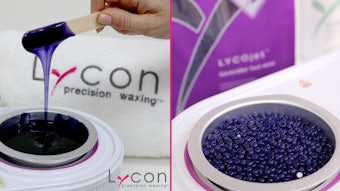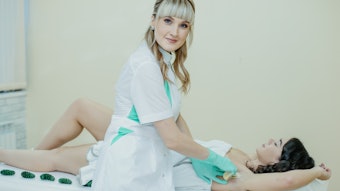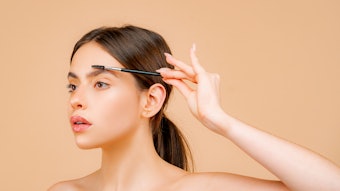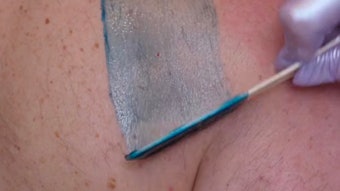
Who hasn’t seen a friend or client after some time, only to be surprised by their sudden weight loss? Are they ill? Crash diet? Nope, it’s the Ozempic! Suddenly it seems everyone is taking a GLP-1. As licensed professional estheticians, it’s crucial to stay informed about medical advancements and medications that can affect the skin’s appearance and condition. Afterall, the skin is the largest organ and our focus.
One such class of medications that has gained widespread attention is GLP-1 receptor agonists (glucagon-like peptide-1), including drugs like semaglutide (Ozempic, Wegovy), tirzepatide (Mounjaro) and liraglutide (Saxenda). These medications are primarily used to manage obesity and diabetes, but they are increasingly prescribed for weight loss due to their effectiveness.
Slated as a miracle drug, their popularity has boomed in the last couple of years. Mayo Clinic says research has found that some of these medicines may lower the risk of certain serious health conditions, such as kidney disease, heart disease, heart failure and stroke. These medications can also help to control insulin levels and control the amount of sugar made by the liver. Many people who take these medications may also see their blood pressure improve. But, it's not clear whether these benefits are from the medicine or a result of weight loss. Some people lose up to 20% of their body weight.
Whether injected or taken orally, these medications give hope for people who struggle with chronic diseases like obesity and diabetes. Because of the success of these drugs, people looking to lose a mere 10 or 15 pounds while preparing for their wedding or a reunion are also finding great results.
Side Effects of Weight Loss Drugs
GLP-1 medications are generally safe, but there are possible side effects. Mayo Clinic cites common side effects of nausea, vomiting, diarrhea and headache. Low blood sugar and allergic reactions are more serious side effects. Pancreatitis and cancer are very serious risks. Anyone taking GLP 1 medication should seek immediate medical attention if severe vomiting and diarrhea, severe pain or tenderness in your belly, inability to pass gas or move your bowels, jaundice (yellow skin color) or other side effects should arise. However, while many people experience significant weight loss, they may also contend with loose or sagging skin which is a side effect of losing weight quickly and also losing muscle mass.
When you lose weight quickly, your body uses the energy stored in your muscles and fat for fuel. This can result in muscle loss, even if you're also eating well and exercising. According to Baton Rouge General, a recent study showed that those taking Ozempic, or any form of semaglutide, lost on average 60% fat and 39% muscle mass. In another study that looked at those taking Zepbound, or the active ingredient tirzepatide, showed that patients lost roughly 25% muscle and 75% fat during treatment.
This introduces new challenges when performing esthetic services. While facial massage and extractions may become more difficult, the biggest issue is with waxing, as it poses the most risk. Below, I’ve outlined important considerations and techniques for safely and effectively waxing clients who have used or are currently using GLP-1 medications and dealing with skin laxity or loose skin.
Understanding the Effects of GLP-1 Medications on Skin
GLP-1 medications work by mimicking a hormone in the body that regulates blood sugar and appetite, resulting in weight loss and muscle mass. While they are effective, this rapid weight loss can leave clients with loose, lax skin. As skin stretches and then retracts with significant weight loss, its elasticity may be reduced, making it more prone to irritation, bruising and damage.
For estheticians, understanding how these medications affect the skin is essential to providing safe and effective waxing services. Loose skin, especially when it’s in areas that are frequently waxed, such as the bikini, upper legs, underarms and face, can be more delicate and require extra care during the waxing process.
1. Assess the Client’s Skin
Before waxing, it’s important to thoroughly assess the skin’s condition. This is particularly critical for clients on GLP-1 medications. Loose skin can be fragile and more prone to injury, such as tearing, bruising or lifted skin. Check for the following.
Skin Texture. Loose skin may have a thinner, more fragile texture, making it more sensitive to the removal of the wax.
Skin Hydration. Proper hydration is key. Loose skin may be drier, which can lead to greater sensitivity. Encourage your client to hydrate well in advance of their appointment. Internally and externally. Hyaluronic acid is the key ingredient to look for.
Pre-existing Issues. Look for signs of irritation, stretch marks or other issues that may have resulted from rapid weight loss. These areas might require special attention and care and if extreme, may be a contraindication.
2. Tailor Your Waxing Technique
When working with clients who have loose skin, adjusting your waxing technique is important to avoid injury and ensure a smooth, effective service. Here are some tips for waxing delicate or loose skin.
Gentle Tension. Loose skin can easily stretch, so be sure to hold the skin taut but not overstretched when applying wax. Gently securing the skin in the direction opposite of the wax removal will help minimize discomfort and reduce the risk of skin damage.
Smaller Sections. Wax in smaller sections to give more control over the wax and to avoid unnecessary pulling. This also helps with reducing pain and irritation, which is important when working with delicate skin.
Light Pressure. Use lighter pressure when applying the wax. Excessive pressure may cause the skin to stretch and increase the risk of tears or bruising.
Sensitive Areas. Be particularly cautious with areas of the body where skin is more prone to damage, such as the bikini area, the face and definitely between the butt cheeks, which often experience the noticeable effects of loose skin after weight loss.
3. Adjust Waxing Products and Tools
Switching to products designed for sensitive or delicate skin can greatly benefit clients with loose skin due to GLP-1 medication use. Here’s what to consider.
Gentle, Low-Temperature Wax. Opt for a low-temperature wax that is less irritating for sensitive and fragile skin. Stripless or hard wax can be particularly beneficial for sensitive areas.
Pre- and Post-Wax Care:.Invest in pre- and post-wax products that focus on hydration and calming the skin. For pre-waxing, use a gentle cleanser, followed by pre wax oil. After waxing, apply calming products to help reduce irritation. Aftercare is crucial when waxing clients with loose skin, as it helps prevent complications and promotes healing.
Recommend hydration during aftercare, as well as avoiding sun exposure. Encourage your client to hydrate their skin regularly, internally with water intake and externally with hydrating products. Remember hydration means water. Recommend that clients avoid sun exposure for at least 24 hours after waxing to reduce the risk of irritation or pigmentation changes.
4. Client Consultation and Communication
Communication with your client is essential before beginning any waxing treatment, but it is especially important when waxing clients on GLP-1 medications. During the consultation, discuss if there are any areas where they may experience particularly loose or sensitive skin. Be sure to ask if they are experiencing any side effects from the medication, remembering that vomiting or diarrhea cause dehydration that will affect the skin.
Be transparent with your client about what they might experience from the waxing service. They may experience more redness or irritation than usual, particularly in areas with looser skin. There is an increased risk of lifted skin especially if precautions aren’t taken. Waxing clients who have taken GLP-1 medications and now have loose skin requires a more nuanced approach to ensure both safety and efficacy.
By carefully assessing the skin, adjusting techniques, using appropriate products, plus maintaining clear communication, estheticians can provide a high level of service while minimizing risks. With the right precautions and care, estheticians can help clients feel confident and pampered while navigating the challenges of loose skin post-weight loss.









